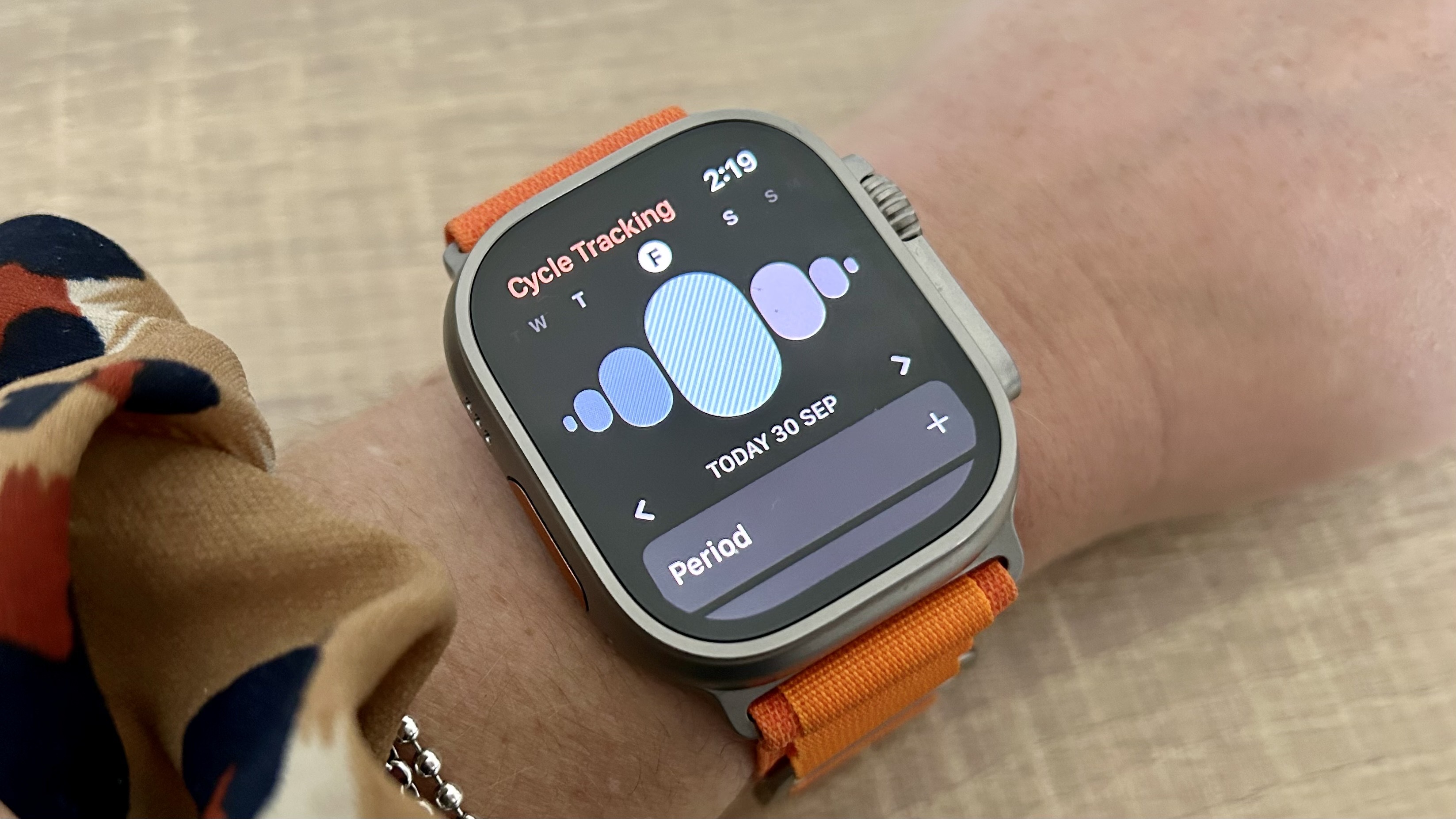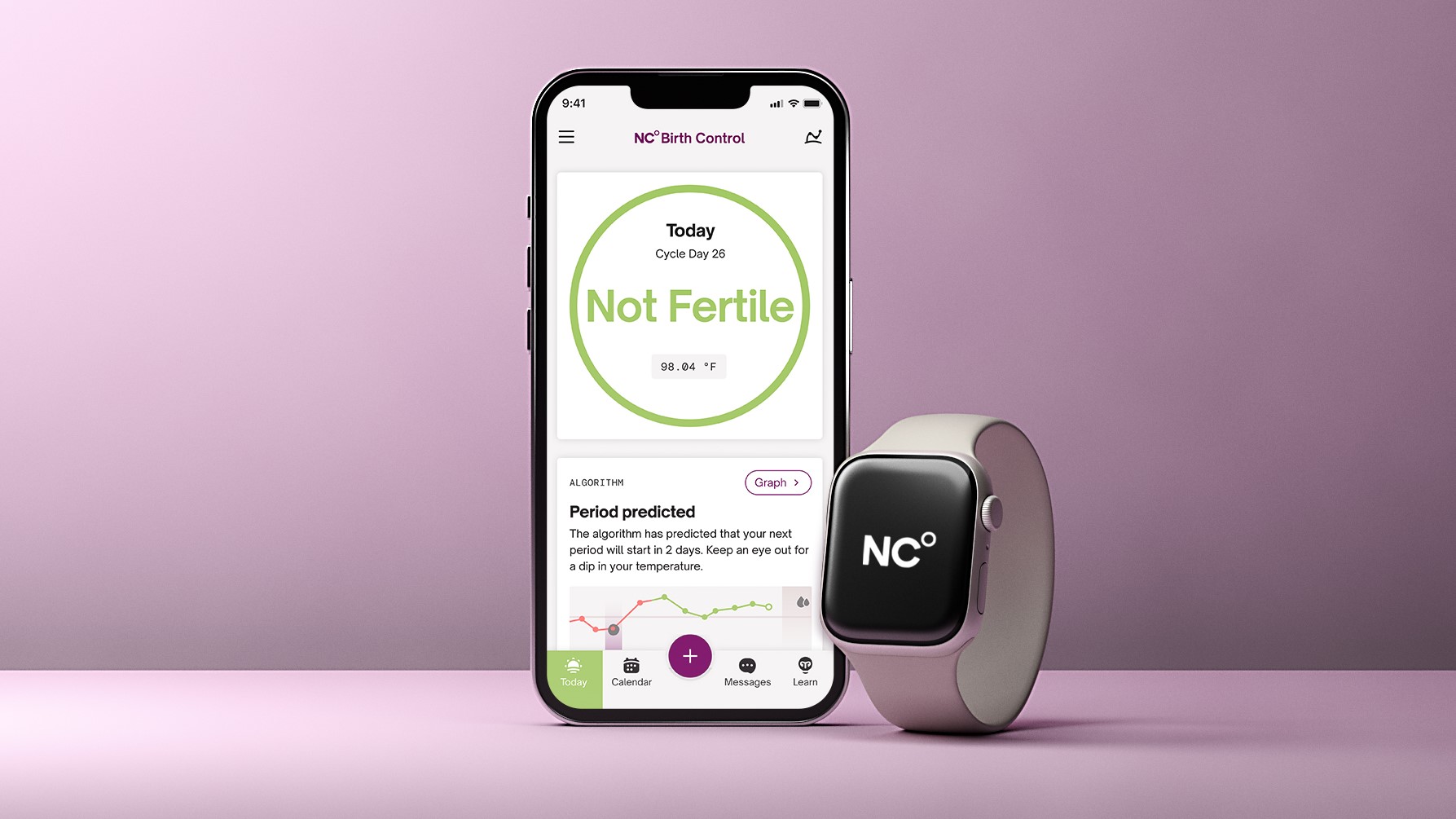Apple Watch fertility tracking just got a massive upgrade — what you need to know
Your Apple Watch can now integrate with this popular app

When Apple announced its skin temperature sensor in the Apple Watch 8 and Apple Watch Ultra, it made a big deal about the watch being used to track your fertility.
Using two built-in sensors, the Apple Watch Series 8 and the Apple Watch Ultra have the ability to read the temperature of the skin every five seconds overnight (this sensor will also be available on the Apple Watch Series 9 and Apple Watch Ultra 2, launching this month).
At the time, Apple said this allowed the built-in menstrual cycle tracking app to give users a better idea of when they are ovulating, as the body’s temperature rises in response to ovulation. This can be helpful for some women, whether they’re trying to conceive or avoid getting pregnant. That said, it wasn’t perfect, and using the Apple Health app to predict ovulation was a little fiddly, plus, Apple made it clear these readings were not intended to be used as a form of birth control.
From today, however, you can integrate your Apple Watch with the fertility tracking app Natural Cycles. The integration will allow the Natural Cycles app to use the skin temperature readings on the Apple Watch to predict your fertile and infertile days, helping women prevent and plan pregnancies. Instead of taking a separate reading using a thermometer, as with the integration with the Oura ring, the app will read the data from the Apple Watch each morning, and update your status.

Natural Cycles is a birth control app that has been cleared by the FDA to be used as birth control. Apple Watch wearers wanting to integrate their watch with Natural Cycles will need to pay for a Natural Cycles subscription and then sync the device from the Natural Cycles app. Natural Cycles costs $119/£69 annually or $9.99/£9.99 per month.
How to track your skin temperature using the Apple Watch
Your wrist temperature is taken while you're asleep, so in order for your Apple Watch to take your temperature, you’ll need to put your device into Sleep mode. Your watch will not take your wrist temperature if it is not in Sleep mode.
Your body temperature naturally fluctuates and can vary each night due to your diet and exercise, alcohol consumption, sleep environment or physiological factors, such as menstrual cycles and illness. After around five nights of tracking, your Apple Watch will determine your baseline wrist temperature and look for nightly changes to it. If you do decide to upgrade to one of the newer Apple Watches this month, it’ll need an additional five days to re-establish your baseline data.
Sign up to get the BEST of Tom's Guide direct to your inbox.
Get instant access to breaking news, the hottest reviews, great deals and helpful tips.
To view your temperature data on your Apple Watch, head to the Health app on your iPhone. From here, tap Browse, then Body Measurements, then Wrist Temperature. For most women, after ovulation, there is a slight rise in body temperature, which will stay high if you are pregnant, or drop again before your next period if you aren’t.
If you do plan on using your Apple Watch temperature data to predict fertile days, it’s important to wear it at night consistently, to ensure it is in Sleep mode, and to make sure it is tight enough at night. If the watch is worn too loosely around the wrist, the readings are not likely to be accurate.
More from Tom's Guide

Jane McGuire is Tom's Guide's Fitness editor, which means she looks after everything fitness related - from running gear to yoga mats. An avid runner, Jane has tested and reviewed fitness products for the past five years, so knows what to look for when finding a good running watch or a pair of shorts with pockets big enough for your smartphone. When she's not pounding the pavements, you'll find Jane striding round the Surrey Hills, taking far too many photos of her puppy.
